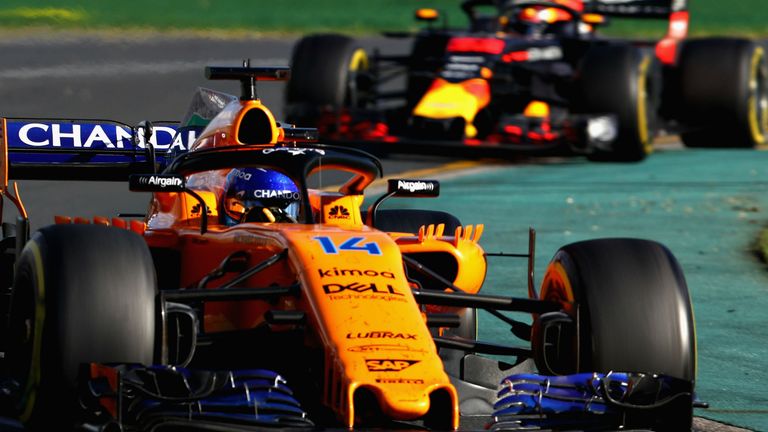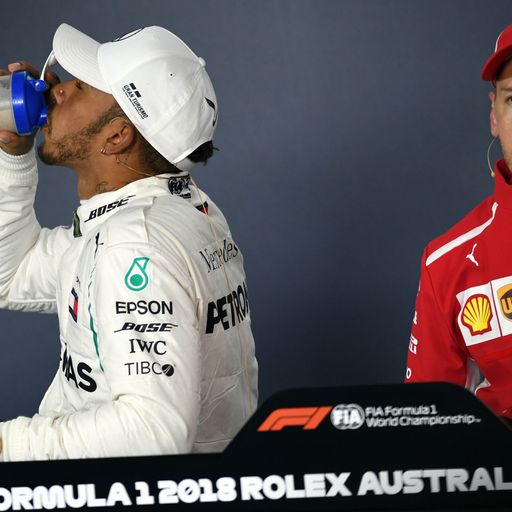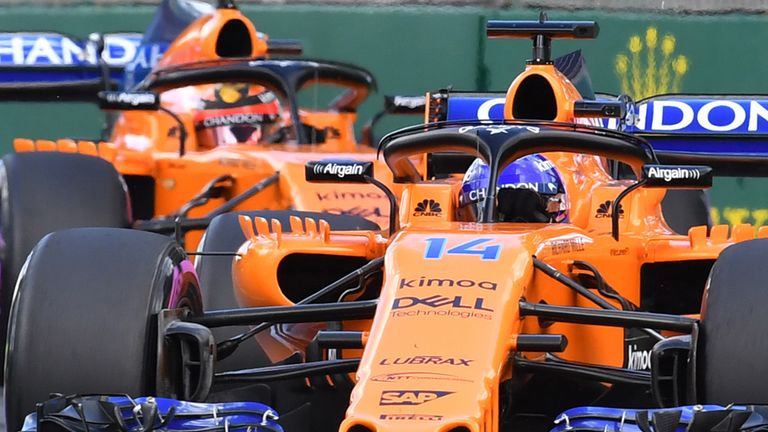Why McLaren still have a mountain to climb despite strong 2018 start
The perfect start, or proof of a "worrying deficit" to Red Bull? Sky F1 expert Mark Hughes analyses McLaren's first weekend with Renault
Thursday 13 December 2018 14:40, UK
Fernando Alonso's fifth place in Australia with the McLaren-Renault was being spun positively by the team, which pointed out that at the first attempt it equalled the best result in three years of slog with Honda.
But closer scrutiny suggests a worrying performance deficit to the team's ultimate point of reference, Red Bull.
The Formula 1 Gossip Column
Brawn on F1's 'missing ingredient'
Regardless of whether Renault Sport made any competitive progress relative to Mercedes and Ferrari with its 2018 power unit, one of the biggest pre-season intrigues was how would the newly Renault-powered McLaren shape up against Red Bull. After three disastrous seasons with Honda, during which time it was frequently at pains to point out the quality of its car's aerodynamic performance, McLaren came into the season with a lot to prove and with Red Bull - often cited as the gold standard of F1 aerodynamics - being powered by the same engine, there was going to be nowhere to hide.
The Melbourne weekend actually only confirmed what was strongly suggested in testing - that the MCL33's raw performance is well adrift of the RB14's.
The nearest we saw to a direct comparison was probably in the late stages of Sunday's race when Alonso, fending off Max Verstappen's delayed and damaged Red Bull, was pushing hard on 31-lap-old soft tyres and took 1m 26.978s to complete his 57th lap. Red Bull's Daniel Ricciardo, pushing hard to pressure Kimi Raikkonen's Ferrari, set the race's fastest lap on lap 54 on 28-lap-old soft tyres at 1m 25.945s.
In qualifying the day before, direct comparisons were more difficult. Alonso made a Q2 lock-up error that cost him a place in Q3 - and the Red Bulls opted to do Q2 on super-soft tyres rather than the ultras of everyone else. Alonso's error was reckoned to have cost him around 0.15s. the super-softs were reckoned by Pirelli to be 0.25s slower than the ultras. Going with those estimations suggests Verstappen could have done a 1m 22.2s in Q2 and Alonso a 1m 23.5s.
During the low fuel part of the Friday P2 practice session on ultra-softs Verstappen went round in 1m 24.1s, Alonso in 1m 25.2s (both on ultras).
In summary, McLaren's lap time deficit to Red Bull seems to be somewhere between 1s and 1.3s. That was the hard reality of Melbourne, but with extenuating circumstances that might imply it's not necessarily a permanent state of affairs.
Before the weekend began, Alonso was already managing expectations, saying on Thursday, "I understand that we are not at the level of Mercedes now or the level of Red Bull or Ferrari - or that's what we think after winter testing - so we are not in that leading group yet. But we should be there in a couple of races time or in the second part of the championship or something, because we are McLaren so we should be there. This weekend will be our lowest level."
The call on which power unit was going to be used - Honda or Renault - came very late and there was an inevitable time loss in development time resulting from that. This was based around the very different rear end architecture. The Renault - with the joint turbine and compressor hanging off the back of the engine - could be mounted further forward within the car, but with a more aerodynamically disruptive rear. The Honda, with its Mercedes-like split turbine-compressor, had a cleaner rear end but could not be mounted so far forward. Naturally, even with a team of McLaren's size, that focus on late notice rear end design impacted upon the whole.
It's notable that although the car's wheelbase has been extended over the MCL32's by bringing the front axle further forwards, there has been a corresponding bringing forward of the sidepod - so retaining the same distance between front axle and sidepod. Although this will have allowed the airflow regime to remain as before, it does not take advantage of the potential aerodynamic gains to be made by having more distance between axle and sidepod - something that Red Bull has taken full advantage of by adopted the Ferrari-like separation of side impact structure from the sidepod. This may not be the main reason for the performance shortfall, but it possibly hints at the compromises that had to be made by the late-notice engine change.
McLaren reckon there is a lot more performance to bolt on in the next few races, including a new nose set to debut in Spain. But the others are not going to be standing still, as McLaren well understands.






